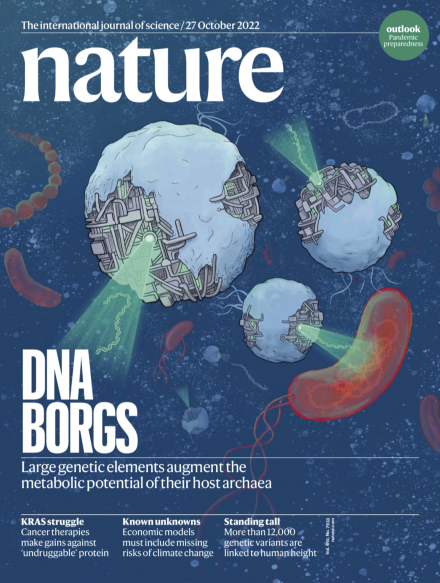A team led by UC Berkeley’s Jill Banfield discovered DNA structures within a methane-consuming microbe that appear to supercharge the organism’s metabolic rate. In a nod to the Star Trek universe, they named the genetic elements “Borgs” because the DNA within contains genes assimilated from many organisms.

As part of her work, Banfield, also a Berkeley Lab faculty scientist with a secondary appointment in Biosciences’ Environmental Genomics and Systems Biology (EGSB) Division, and her colleagues regularly sample microbes in different habitats to see what interesting genes they’re using for survival. They are curious how these genes might affect global cycles of key elements, such as carbon, nitrogen, and sulfur. In addition to the genomes within cells, they look at portable packets of DNA known as extra-chromosomal elements (ECEs). These elements transfer genes between bacteria, archaea, and viruses, allowing microbes to quickly gain beneficial genes from their neighbors.
While studying Methanoperedens, a type of archaea, sampled from seasonal wetland pool soil in California, the scientists found evidence of an entirely new type of ECE. Unlike the circular strands of DNA that make up the majority of plasmids, the most well-known type of extra-chromosomal element, the new ECEs are linear and very long—up to one-third the length of the entire Methanoperedens genome. After analyzing additional samples containing methane-consuming archaea from underground soil, aquifers, and riverbeds in California and Colorado, the team uncovered a total of 19 distinct Borgs.

Using advanced genome analysis tools, the scientists determined that many of the sequences within the Borgs are similar to the methane-metabolizing genes within the actual Methanoperedens genome. Some of the Borgs even encode all the necessary cellular machinery to eat methane on their own, so long as they are inside a cell that can express the genes.
In the study published in Nature, the researchers described the curious collection of genes within Borgs and their initial investigations into the role these DNA packages play in environmental processes, such as carbon cycling.
Read more at the Berkeley Lab News Center.




